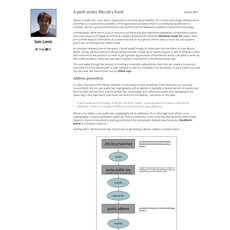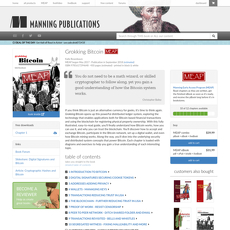Bitcoin Review
Bitcoin
en.wikipedia.org
Bitcoin Review Guide (2025): No‑Nonsense Start, Safety, and FAQs Backed by Trusted Sources
Thinking about Bitcoin but getting whiplash from jargon, moon-talk, and scary headlines? You’re not alone. I’ve spent years testing crypto platforms and resources, and I know how hard it is to find a straight, practical guide that answers real questions fast.
Promise: By the end of this series, you’ll know what Bitcoin is, how it works, how to buy and store it safely, the risks, the opportunities, and where to keep learning (yes, including the balanced overview on Wikipedia).
I’ll keep this friendly, plain-English, and BS-free—so you can make smart moves without wasting hours in the weeds.
The problems most people hit with Bitcoin
- Too much jargon. “Blockchain,” “nodes,” “mining,” “mempool,” “halving,” “layer 2”—it can feel like a secret club. You don’t need to be a developer to understand Bitcoin, you just need clear explanations and a few mental models. I’ll give you exactly that—no tech degree required.
- Fear of scams and hacks. Phishing sites, fake wallet apps, giveaway scams, shady custodians—the bad actors are real. Consumer agencies report billions lost to crypto-related scams globally each year (see the yearly Chainalysis crime reports and alerts from the FTC). The good news: a few simple habits—verified downloads, hardware wallets, and “test sends”—remove most of the risk.
- Not knowing where to start. Which exchange? Which wallet? How do you send safely the first time? People often jump in, skip basic checks, and regret it. A short, practical checklist saves you fees, stress, and mistakes.
- Money questions. Is it legal? How is it taxed? Is it a good investment? How risky is it? Rules vary by country and the market is volatile. You need plain language and links to trusted references—starting with Wikipedia’s Bitcoin page for neutral background, then regulation and tax resources for your country.
- Noise vs facts. One week it’s “Bitcoin is dead.” Next week it’s “Bitcoin to the moon.” Reality sits in the middle: a 24/7 global asset with a fixed supply, powerful properties, and real risks. You’ll get context, not cheerleading.
- Environmental concerns. You’ve seen the headlines. Bitcoin does use energy; the useful question is how it’s sourced and how efficiently it’s used. Research like Cambridge’s Bitcoin Electricity Consumption Index tracks estimates, while industry and academic work points to growing use of renewables, stranded energy, and off-peak loads. We’ll separate signal from noise so you can argue this topic with facts.
If any of these points hit home, you’re exactly who I’m writing this for.
What I’ll help you do (the promise)
- Explain Bitcoin in plain English—what it is, why it exists, and how it actually works
- Show you how to buy, store, and move BTC safely without rookie mistakes
- Cover fees, confirmations, volatility, and the basic “rules of the road” for risk-aware investing
- Clarify what mining is, what “halving” means, and what happens as new supply trends to zero
- Point you to reliable places to learn (including Wikipedia and my vetted resources) so you’re not guessing
- Finish with a quick FAQ that answers the most Googled questions in seconds
Who this guide is for
- Curious beginners who want a clean, step-by-step path without hype
- Investors who want risk-aware basics and practical security tips
- Builders and researchers who want high‑quality sources and a solid mental model
- Anyone overwhelmed by noise and looking for trustworthy footing
How to use this guide
- Start with the “what and why” so the rest clicks into place quickly
- Jump to the sections you need—buying, wallets, safety, investing, mining—when you’re ready
- Bookmark the FAQ for quick answers
- Use the resource links to go deeper with sites I trust, including the comprehensive overview on Wikipedia
Before we go further, a quick note on approach: I’ll keep explanations short, show you where the numbers and sources live, and give you simple checklists that actually prevent headaches. No hero worship. No fear-mongering. Just the signal.
Ready for the cleanest answer to “What is Bitcoin, how does it work, and why should I care?” In the next section, I’ll explain it in one sentence—then show you the simple version that makes everything else easy. You’re about to see Bitcoin without the fog.
What Bitcoin is, how it works, and why it matters
Picture money that never closes, doesn’t ask permission, and can’t be printed at will. You can send it across the world in minutes, hold it yourself like cash, and prove it’s yours without a bank. That’s the big idea behind Bitcoin—and why people keep coming back to it despite the noise.
I’ve watched folks in inflation-hit countries use it as a lifeline, freelancers get paid on weekends without waiting on banks, and families move value across borders without paperwork stopping them at the airport. It’s not magic; it’s math, open code, and a network nobody single-handedly controls.
Bitcoin in one sentence
Bitcoin is a global, permissionless digital money with a fixed 21 million supply, secured by a decentralized network—not a bank or government.
How Bitcoin actually works (simple version)
Think of Bitcoin as a public spreadsheet everyone can check and no one can secretly change. That spreadsheet is called the blockchain. Here’s what happens under the hood, without the jargon headache:
- Wallets and keys: Your wallet holds a secret key (private key) that proves coins are yours. When you “send,” your wallet creates a cryptographic signature. No private key = no coins.
- Transactions: Your wallet broadcasts a transaction to the network. It sits in a public waiting room (the mempool) until included in a block.
- Miners and Proof-of-Work: Miners compete using computers to package transactions into blocks by solving a cryptographic puzzle (SHA-256). The first valid block wins a reward and fees, and gets added to the chain.
- Nodes verify the rules: Thousands of independent computers (nodes) check every block and transaction against the rules—supply cap, signatures, no double-spends. If miners try to cheat, nodes reject it.
- Confirmations: Once your transaction is in a block, it has one confirmation. Each block after that adds another. For everyday payments, 1–3 is common. For large transfers, 6 is the gold standard.
- Fees set your speed: When the network is busy, people pay higher fees to get in faster blocks. If you’re patient, you can pay less and wait.
- Predictable rhythm: A new block comes roughly every 10 minutes, maintained by a difficulty adjustment that auto-tunes mining to keep time steady.
One more practical detail: Bitcoin is divisible into tiny units called satoshis (sats). 1 BTC = 100,000,000 sats. You don’t need a whole coin to start; you can buy a few dollars’ worth.
Scarcity mechanics: 21M cap and halving
Bitcoin’s supply isn’t a promise—it’s code. New BTC enter circulation through block rewards paid to miners. That reward halves every 210,000 blocks (about every 4 years). This “halving” cuts the rate of new coins the way a metronome shortens steps over time:
- 2009: 50 BTC per block
- 2012: 25 BTC
- 2016: 12.5 BTC
- 2020: 6.25 BTC
- 2024: 3.125 BTC (current)
At ~144 blocks per day, today’s issuance is about 450 BTC daily—less than 1% annual supply growth. The maximum supply will asymptotically reach 21,000,000 around the year 2140. That predictability is why many compare Bitcoin to “digital gold.” Narratives follow the halving cycle, but as always, past market behavior doesn’t guarantee the future.
A quick history: Satoshi, whitepaper, and launch
In October 2008, a pseudonymous creator named Satoshi Nakamoto posted a nine-page PDF to a small cryptography mailing list. It was called “Bitcoin: A Peer-to-Peer Electronic Cash System.”
“What is needed is an electronic payment system based on cryptographic proof instead of trust.”
On January 3, 2009, the first block (the “genesis block”) was mined, embedding a newspaper headline about bank bailouts—a timestamp and a hint at the motivation. Early users experimented, famously buying two pizzas for 10,000 BTC in 2010. The network survived hacks at exchanges (like Mt. Gox in 2014), multiple boom-and-bust cycles (2013, 2017, 2021), and kept upgrading: SegWit (2017) improved capacity; Taproot (2021) enhanced privacy and flexibility.
Along the way, real-world milestones stacked up: a nation-state made it legal tender (El Salvador, 2021), and U.S. spot Bitcoin ETFs were approved in 2024, giving traditional investors a regulated on-ramp. Through it all, the open-source community kept shipping code while independent nodes enforced the rules—that separation of powers is the heart of Bitcoin’s resilience.
Bitcoin vs fiat vs gold
- Scarcity: Bitcoin’s cap is hard-coded at 21M. Fiat (USD, EUR, etc.) supply is policy-driven and elastic. Gold is scarce but supply increases with new mining.
- Portability: You can carry millions in BTC with a 12–24 word seed. Fiat moves via banks (hours vary, fees apply). Gold is heavy and hard to move at scale.
- Verifiability: Bitcoin is instantly auditable on-chain. Fiat requires bank statements and intermediaries. Gold needs physical assays.
- Seizure resistance: Properly self-custodied BTC is hard to confiscate. Fiat balances can be frozen. Gold has a long history of confiscation.
- Settlement: Bitcoin settles globally in about an hour on-chain. Fiat wires can take days, especially cross-border. Gold settlement is slow and often custodial.
- Volatility: Bitcoin is the most volatile in the short term—price swings are real. Fiat is stable in nominal terms but inflates over time. Gold is less volatile but not immune to swings.
None of this means Bitcoin replaces fiat or gold for everyone. It means you have a new option with different trade-offs. For a freelancer in Argentina paid by a client in Germany, those trade-offs can be life-changing.
Key source docs you should know
- Satoshi’s whitepaper: The original nine pages that started it all. Clear, sharp, worth every minute. bitcoin.org/bitcoin.pdf
- Bitcoin on Wikipedia: A balanced, high-level overview with history, mechanics, and references. wikipedia.org/wiki/Bitcoin
- Bitcoin Core: The reference implementation and documentation for running a node and understanding consensus rules. bitcoincore.org/en/doc/
- Energy context (study): Cambridge’s ongoing research into Bitcoin’s electricity profile. Useful for facts over headlines. ccaf.io/cbnsi/cbeci
If you keep just two tabs pinned, make it the whitepaper and the Wikipedia page—they’ll anchor your understanding better than any tweetstorm.
Here’s the real question: now that you know what Bitcoin is, how do you get your first sats safely, pick the right wallet, and avoid rookie mistakes? Keep going—I’ll show you exactly how to buy, store, and send without stepping on landmines.
Getting started: buying, storing, sending, and staying safe
Let’s make your first steps with Bitcoin simple, fast, and safe. No fluff—just the exact moves I’d make if I were starting again today, with a clear plan to avoid the traps that catch most beginners.
“Not your keys, not your coins.” It’s a cliché for a reason. Own your Bitcoin the right way, or someone else owns it for you.
How to buy Bitcoin (fast, safe, and legal)
There are three practical ways to get BTC: regulated exchanges, peer‑to‑peer (P2P), and Bitcoin ATMs. Here’s how I think about each—and what I personally check before I touch the buy button.
- Centralized exchanges (CEX, KYC required): Best for beginners and bank on/off‑ramps.
- What I look for: strong regulation/licensing in my country, transparent fees, proof‑of‑reserves, smooth fiat withdrawals, and security features (FIDO2 keys, withdrawal allowlists).
- Region examples (not endorsements): US: Coinbase, Kraken. EU/UK: Bitstamp, Kraken. Global: Binance (availability varies). Always verify local legality.
- Cost reality: bank transfer + spot trade can be ~0.1%–0.5% in fees; cards can run 1.5%–4% plus a spread. Check the fee schedule, not the marketing.
- Step‑by‑step: sign up → complete KYC → secure your account with an authenticator app → deposit via bank transfer (usually cheapest) → place a limit order on the BTC/your‑currency pair → withdraw to your own wallet once it settles.
- P2P marketplaces (no traditional KYC in many cases): More private, requires more care.
- Options: Bisq, Hodl Hodl, RoboSats, Peach (availability varies by region).
- How it works: you match with a seller, use escrow and reputation systems, pay by agreed method, and release BTC on confirmation.
- Pro tip: stick to sellers with long history and many completed trades; only chat inside the platform; for cash trades, meet in public spaces with Wi‑Fi and follow platform safety rules.
- Bitcoin ATMs: Fastest way to turn cash into BTC, often the most expensive.
- Typical fees: 7%–15% all‑in—use for convenience, not for big buys.
- How: bring your mobile wallet, scan your address QR, insert cash, receive BTC on‑chain. Find machines via CoinATMRadar.
Reality check: independent research from Chainalysis shows scams and fraud cluster around off‑platform communications and unregulated venues. If someone pushes you to move “off escrow,” walk away. When in doubt, slow down. The deal of a lifetime won’t vanish if it’s legit.
Wallets explained: custodial vs self‑custody
Your wallet is where the real control lives. Here’s the straight talk:
- Custodial wallets: an exchange or app holds your keys.
- Pros: easy to use, password resets, quick sells.
- Cons: third‑party risk, withdrawal limits, account freezes, hack exposure.
- When it’s fine: small spending balances or short holding periods before you withdraw to self‑custody.
- Self‑custody wallets: you control the keys (the seed phrase).
- Pros: sovereignty, fewer counterparty risks, long‑term security.
- Cons: you’re responsible for backups and safe handling.
- When it shines: savings, long‑term holds, larger amounts.
Good user‑friendly self‑custody options exist on mobile and desktop. Examples people often start with include Blockstream Green (mobile), Phoenix or Muun for Lightning‑enabled mobile, and Sparrow or Electrum on desktop. For bigger balances, I prefer hardware wallets (below).
Hot vs cold storage (and hardware wallets)
Hot wallets are connected to the internet; cold wallets keep your keys offline. Convenience vs security—pick the right tool for the job.
- Hot (online): fast spending, daily use; higher exposure. Use for coffee money, not life savings.
- Cold (offline): best for long‑term storage and larger amounts.
Hardware wallets are the sweet spot for most long‑term holders. Common choices include Ledger, Trezor, BitBox02, Coldcard, and Keystone. Buy directly from the manufacturer, not a random marketplace, to avoid tampered devices.
- Setup basics:
- Generate your wallet offline on the device, then write down the 12/24‑word seed phrase by hand.
- Never photograph or store the seed in the cloud. Anyone with it can take your coins.
- Consider a steel backup (e.g., metal seed storage) for fire/flood resistance.
- Enable a PIN and consider a passphrase if you know how to manage it safely.
- For larger holdings: a well‑documented 2‑of‑3 multisig setup (e.g., Casa, Unchained, or DIY with Sparrow + multiple devices) reduces single‑device failure risks.
Tip: before moving serious money, restore your wallet from the seed on a second device (or a test environment) and confirm addresses match. It’s a 10‑minute rehearsal that can save you everything.
Sending BTC, fees, and confirmations
Getting money from A to B safely is a skill. Here’s my “never‑skip” checklist:
- Verify the address format: modern Bitcoin addresses often start with bc1q (SegWit) or bc1p (Taproot), older formats start with 3 or 1. They are not the same as Ethereum/TRON addresses. Don’t mix networks.
- Scan the QR or paste carefully, then check the first 6 and last 6 characters. Clipboard malware is real.
- Test send: send a small amount first, confirm it arrives, then send the rest.
- Fees 101: fees are measured in sats/vByte and depend on mempool congestion. Check current fees at mempool.space. Choose:
- Low priority if you can wait.
- Medium for same‑hour confirmations.
- High if it must land in the next block (~10 minutes on average).
- Confirmations: 1 confirmation is often fine for small amounts, 3 for moderate, 6+ for large or institutional policies. Exchanges commonly require 3–6.
- Stuck transaction? If you enabled RBF (Replace‑By‑Fee), bump the fee. If you control the receiving wallet, CPFP (Child‑Pays‑For‑Parent) can speed it up. Patience works too when fees fall.
- Lightning invoices look like “lnbc…” and are for instant Lightning payments, not on‑chain transfers. Match the method to the invoice type.
“Slow is smooth, smooth is fast.” Measure twice, send once, and you’ll never have a “where did my Bitcoin go?” moment.
Security basics everyone should follow
This is where most people either get safe or get sorry. A few habits make a huge difference.
- Turn on 2FA with an authenticator app (or hardware security key) on every exchange and email account. Avoid SMS—SIM swaps are common. Google’s research shows strong MFA can block the vast majority of account‑takeover attempts—hardware keys are about as good as it gets (Google Security Blog).
- Use a password manager and unique passwords. Don’t reuse logins. Ever.
- Phishing armor: bookmark official sites, type URLs manually, beware look‑alike domains, and never click “support” links from DMs. If someone rushes you, that’s your red flag.
- Verified downloads only: get wallet software from the official site. Check signatures/hashes if the project provides them.
- Withdrawal allowlists: on exchanges, lock withdrawals to your own addresses and enable a time‑delay for new ones.
- Clean devices: keep OS/firmware updated; limit browser extensions; consider a dedicated device for larger holdings.
- Seed phrase discipline: write it by hand, store offline, never type it into a website or share with “support.” Real support will never ask.
- Privacy and safety: don’t brag about holdings, especially with your real name and location attached.
Worth noting: independent industry reports consistently show phishing and credential theft remain the top initial attack vectors. Your best defense is boring—strong MFA, clean devices, and a reflex to slow down on anything unexpected.
Taxes, legality, and reporting
Bitcoin is legal to own in many countries, but rules vary. Most tax authorities treat BTC as property/asset. That means selling, trading for another crypto, or spending it can be taxable events.
- Track everything: dates, amounts, fees, and which wallet or exchange you used.
- Cost basis matters: know what you paid (plus fees). Methods like FIFO or specific identification may be allowed depending on your jurisdiction.
- Spending counts: paying with BTC is often a taxable disposal. Some places offer de minimis exemptions—check current local rules.
- Tools to make it painless: Koinly, CoinTracker, Accointing, or CoinTracking can import wallets/exchanges and generate reports.
- Local specifics: US filers typically use Form 8949 + Schedule D; UK uses HMRC CGT reporting; the EU is rolling out unified frameworks. Laws change—verify current guidance.
This isn’t tax advice. It’s a nudge to get organized from day one. Export your exchange CSVs. Label transactions in your wallet. Future‑you will thank you.
Common beginner mistakes to avoid
- Leaving everything on exchanges: custodial risk is real. FTX was the reminder nobody wanted. Withdraw what you intend to hold.
- Losing the seed phrase: no backup, no Bitcoin. Test your recovery process before you need it.
- Buying the wrong “Bitcoin”: BTC is Bitcoin. BCH, BSV, and others are different networks with similar names. Match the ticker and the chain.
- Sending on the wrong network: some platforms offer “BTC” on alternative networks (e.g., BEP20). If the destination expects the Bitcoin network, use the Bitcoin network only.
- Skipping test sends: sending everything in one go is how big mistakes get expensive.
- Underpaying fees in a rush: choosing the lowest fee when you actually need speed leads to panic. Pick the fee for the job.
- Using public Wi‑Fi for logins or seed handling: don’t. If you must, use a trusted VPN and avoid sensitive actions.
- Buying hardware wallets from random sellers: stick to official stores to avoid tampering or pre‑loaded seed scams.
- Leverage and futures on day one: not training wheels—more like a motorcycle on ice. Learn spot first.
I’ve seen thousands of readers skip months of pain by following this path: buy on a reputable on‑ramp, move to a hardware wallet, practice one clean send, and keep great records. Simple beats clever when real money is on the line.
Ready to put BTC to work—investing smartly, paying in seconds, and understanding mining and energy myths from the ground up? That’s exactly where we’re heading next.
Using Bitcoin: investing, payments, mining, and energy questions
Is Bitcoin a good investment?
I treat Bitcoin like a high-volatility, high-upside asset that rewards patience and punishes impatience. It has posted life-changing bull runs and brutal drawdowns (historically up to 80%+). That mix is why process beats emotion.
Here’s a simple, risk-aware playbook I’ve seen work for real people:
- Think in years, not weeks. Bitcoin’s best returns historically came from long time horizons and not panic-selling during downturns.
- Position sizing matters. Many risk-aware investors stay in a small range (for example, 1–5% of a portfolio). It’s not about bravado; it’s about sleeping well.
- Dollar-cost averaging (DCA). Buying a fixed amount on a schedule reduces regret. Tools like DCA backtests show how steady buys across cycles often beat guessing tops and bottoms.
- Diversify and rebalance. If Bitcoin moons or tanks, rebalancing back to targets keeps risk in check.
- Never invest money you can’t afford to lose. Markets don’t care about your timeline.
Access has improved a lot. In 2024, U.S. spot Bitcoin ETFs opened the door for traditional brokerage accounts, but that convenience comes with management fees and custodial risk you should understand. Whether you choose an ETF or self-custody BTC, keep costs, security, and taxes in mind.
“Time in the market beats timing the market.”
If you’re new, consider this gut-check: if Bitcoin fell 50% tomorrow, would you stick to your plan? If the answer is no, you’re probably sizing too big.
Paying with Bitcoin and the Lightning Network
Bitcoin has two practical lanes:
- On-chain: Best for larger, less frequent payments and final settlement. Fees vary with network demand.
- Lightning Network: Built on top of Bitcoin for near-instant, low-fee payments. Great for small to medium payments and everyday use.
Lightning is getting easier. You can scan a QR code and send sats in seconds. Non-custodial mobile wallets like Phoenix and Breez handle channels under the hood. Hybrid options like Muun make both on-chain and Lightning feel seamless. Custodial apps (for example, Strike, Cash App in supported regions, or Wallet of Satoshi) are the simplest but add third‑party risk—use them like a checking account, not a vault.
Real-world use is growing:
- Gift cards and services: Bitrefill and similar sites let you pay Lightning and get instant vouchers for major retailers.
- Self-hosted checkout for merchants: BTCPay Server lets businesses accept on-chain and Lightning without a middleman.
- Micropayments: Tipping creators on social apps, streaming “sats” to podcasters, or paying per-article makes sense with Lightning.
Practical tips I stick to:
- Verify whether an address/invoice is on-chain or Lightning before you send.
- On-chain = consider current fees; Lightning = check invoice expiry (often minutes).
- Test with a tiny amount, then send the rest. It takes seconds and saves headaches.
Mining 101: what it is and who should consider it
Miners turn electricity into network security and get paid in block rewards plus transaction fees. That’s the deal. But not everyone should mine.
Two paths exist:
- Industrial mining: Warehouses, bulk-rate power, professional cooling, and top-tier ASICs. Competitive and capital intensive.
- Home mining: Possible, but noisy (think vacuum cleaner x several), hot, and demands proper electrical setup. ROI depends on your power rate and hardware efficiency.
Reality check:
- Hardware: Modern ASICs are judged by efficiency (Joules per terahash). Newer units beat older ones by a wide margin.
- Power price: Profitability typically requires low electricity rates; high rates can turn mining into an expensive space heater—unless you actually need the heat.
- Pools: Most miners join pools like Foundry USA, Antpool, F2Pool, or Braiins Pool to smooth out rewards.
- Beware “cloud mining.” Most retail offers are opaque or predatory. If you can’t verify costs, risks, and payouts, walk away.
Smart angle for hobbyists: heat reuse. I’ve seen miners warm workshops, greenhouses, or home water systems. If you’re paying for heat anyway, capturing it from an ASIC can improve the economics.
Energy and environment: what’s true today
The best neutral reference on energy use is the Cambridge Bitcoin Electricity Consumption Index. It estimates Bitcoin’s annual electricity draw and compares it to countries and industries. The picture changes over time, but one thing is stable: Bitcoin uses meaningful energy—and that energy mix is shifting.
What I’m seeing:
- Toward cleaner energy: Industry surveys like the Bitcoin Mining Council have reported a majority “sustainable” mix, while academic estimates have been lower. The truth likely varies by region, but the trend is toward stranded and renewable energy. It’s not uniform, and it’s not finished.
- Grid balancing: In flexible markets like Texas (ERCOT), miners can curtail during peak demand and get paid to turn off, freeing power for homes and hospitals. Data and press releases from miners and grid operators in 2022–2024 show this happening during heat waves and storms.
- Methane mitigation: Using flare gas or landfill methane to power miners can reduce emissions (methane’s short-term warming impact is ~80x CO₂). Several firms, including Crusoe Energy, have published case studies on lowering methane waste by converting it into electricity for mining.
- Rising efficiency: Each ASIC generation improves joules per terahash, meaning more security per unit of energy.
The fair take: Bitcoin absolutely uses energy. Whether that’s a net negative or a tool that makes energy systems cleaner and more efficient depends on where, when, and how miners operate—and policy and market design matter a lot here.
What happens when all BTC are mined?
Bitcoin’s issuance schedule keeps shrinking until it effectively ends around the year 2140. Long before then—by the 2030s—well over 99% of coins will already exist. So how do miners keep the lights on?
Fees. As block rewards decline, transaction fees become the primary incentive. We already have hints of that future: in 2023–2024, demand spikes (including new types of on-chain activity) pushed fees sharply higher at times, and miners earned handsomely from the mempool frenzy. Whether fees alone will be enough is an active research topic, but the core idea is simple: scarce blockspace with real demand should command a price that funds security.
Lightning helps by keeping small, frequent payments off-chain while using the base layer for settlement. That mix supports usability without flooding the chain with tiny transactions.
Bitcoin vs Ethereum and other coins
Different tools, different jobs:
- Bitcoin: Prioritizes sound money, decentralization, and stability. Proof‑of‑Work, fixed supply, slow-to-change rule set. Scales primarily with layers (Lightning, sidechains) and careful upgrades.
- Ethereum: Prioritizes programmability. After the Merge (2022), it runs Proof‑of‑Stake. Rich smart contract ecosystem (DeFi, NFTs), frequent upgrades, and scaling via rollups and L2s. Monetary policy and issuance dynamics differ (EIP‑1559 burn + PoS).
Neither path is “better” in the abstract; they’re optimized for different outcomes. If your goal is long-term, credibly scarce money with the strongest track record of censorship resistance, Bitcoin is hard to beat. If your goal is complex on-chain logic and application platforms, Ethereum and other smart contract chains are where builders experiment fastest—along with the risks that come from moving fast.
I like to keep this framing in mind: money vs compute. Bitcoin aims to perfect money. Smart contract platforms aim to perfect programmable compute. Once you see that split, your choices get clearer.
Want the shortest path to reliable sources that cut through the noise so you can get sharp, fast, and confident? In the next section, I’ll hand you my best picks—carefully organized so you don’t waste time or fall for junk. Ready to upgrade your signal?
The best places to build real Bitcoin knowledge (handpicked by me)
Why knowledge comes first
I’ve watched people make and lose fortunes in crypto. The pattern is painfully consistent: those who invest in knowledge first make fewer mistakes, spot scams earlier, and sleep better at night. That’s not a motivational poster; it’s what I’ve seen across tens of thousands of readers who use my lists to learn before they act.
If you like evidence: research on financial literacy consistently shows better decisions and fewer costly errors for people who build knowledge first. One classic paper worth bookmarking is Lusardi & Mitchell’s “The Economic Importance of Financial Literacy” (Journal of Economic Literature). Different field, same lesson: learn first, then act.
My “Deep Knowledge” category on Cryptolinks
I built a category on my site specifically for serious learners. It’s a handpicked set of 24 high-signal resources that cover Bitcoin’s roots, Satoshi’s ideas, developer guides, security best practices, tutorials, research, and the most reliable Q&A threads. If you want to level up without noise, start there.
- Curated for quality: I favor primary sources, projects with strong track records, and communities that correct errors fast.
- Beginner-to-builder path: Start with introductions, then move into technical topics, governance history, and developer docs when you’re ready.
- Real examples inside: early mailing list archives, timeline of the block size debates, practical wallet security guides, and battle-tested programming resources.
- One bookmark to rule your learning: keep your journey structured by starting at my lists here: Cryptolinks – Deep Knowledge and more.
Learn in your favorite format
Different brains, different paths. I group top Bitcoin learning resources by format so you can pick what fits your schedule and style.
- Articles and reference: The Bitcoin Wikipedia page for a balanced overview, and Bitcoin Optech for clear, technically sound updates (great even if you’re not a coder).
- Primary source: Satoshi’s 9-page original paper: Bitcoin: A Peer-to-Peer Electronic Cash System. Read it once slowly; it frames everything else.
- Q&A and debugging: Bitcoin Stack Exchange for precise, vetted answers. When you hit a snag (fees, PSBTs, addresses), search here first.
- Books and guides: Mastering Bitcoin (free online) to go from user to technically literate. Even skimming the early chapters will make you safer.
- Videos: Andreas M. Antonopoulos’ talks and Q&A sessions (YouTube channel) explain complex topics with clarity and zero fluff.
- Forums and history: Bitcointalk for Bitcoin’s living history and dev conversations. Read, don’t rush to post.
- Podcasts: Long-form interviews and case studies from builders and researchers can help you understand trade-offs in the real world (start with “What Bitcoin Did”: official site).
Honest look at the good, the bad, and the ugly
My readers don’t need hype; they need the truth. The best resources show both sides so you build real conviction:
- Booms and busts: Read postmortems on exchange failures (Mt. Gox, FTX) to understand custody risk and why self-custody matters.
- Network governance and trade-offs: The block size debates are required reading if you want to grasp Bitcoin’s “slow and secure” philosophy.
- Security lessons: Learn from phishing waves, SIM swaps, and seed-phrase thefts so you don’t repeat them. Good sources document real attacks and how they succeeded.
- Data, not vibes: For market and crime trends, keep an eye on transparent analytics and annual reports (e.g., Chainalysis’ research hub: reports). You’ll see that risk is real—and manageable with the right habits.
When a resource shows its methods, cites sources, and admits uncertainty, it earns a spot on my list. That’s the standard.
Quick picks to start with today
Want a focused starting line? Open these in new tabs and you’ve got a complete learning loop—overview, primary source, practical Q&A, and a structured library:
- Bitcoin on Wikipedia — neutral, comprehensive background with citations.
- Satoshi’s Whitepaper — the original 9 pages that kicked it all off.
- Bitcoin Stack Exchange — precise answers when you’re stuck.
- My Cryptolinks lists — curated “Deep Knowledge” picks so you keep momentum and avoid low-quality sources.
A simple, no-overwhelm study plan
- Tonight (30 minutes): Read Wikipedia’s lead section, then Satoshi’s abstract and first two sections. Jot down 3 questions; search them on Bitcoin Stack Exchange.
- This week (3 sessions x 45 minutes): Work through a beginner hardware-wallet guide from my lists, do a $10 test buy and a $1 test send, and read one historical piece on the block size debates.
- This month: Skim the first 3 chapters of Mastering Bitcoin, follow Bitcoin Optech’s latest newsletter, and write your own “security SOP” (backups, 2FA, test sends).
You’re set up with the best Bitcoin learning resources and a path that actually sticks. Got specific questions like “How long do confirmations take?” or “Is Bitcoin legal where I live?” I’ve got those covered next—fast, practical answers in the FAQ you can bookmark for quick wins.
Bitcoin FAQ: quick answers to what people ask most
What is Bitcoin and how does it work?
Short version: Bitcoin is a decentralized digital currency. No bank or company runs it. Transactions are broadcast to a public ledger called the blockchain. Miners use Proof‑of‑Work to package transactions into blocks, and thousands of nodes enforce the rules so nobody can fake coins or spend twice. For a neutral background, see the Bitcoin Wikipedia page.
Is Bitcoin safe?
The network: Extremely resilient. It’s been running since 2009 without a successful on‑chain double‑spend at the consensus level.
Your risk: People lose funds through phishing, seed phrase leaks, malware, or exchange blow‑ups. That’s why I:
- Use a hardware wallet for long‑term holdings
- Back up the seed phrase offline, with a duplicate stored separately
- Turn on 2FA (authenticator apps, not SMS) everywhere
- Only download wallets from official sites and verified app stores
Think of Bitcoin like cash in a vault: the vault is strong, but your habits decide how safe your money is.
How do I buy Bitcoin?
Typical path:
- Pick a reputable, regulated exchange in your country
- Complete KYC if required, fund your account (bank transfer, card, etc.)
- Buy BTC, then transfer to a self‑custody wallet if you’ll hold long‑term
- Start small and do a test send before moving larger amounts
Alt option: Some regions offer spot Bitcoin ETFs via a brokerage account. You get price exposure but usually can’t withdraw BTC to your own wallet. Check fees.
How do I store Bitcoin securely?
My baseline setup: a hardware wallet, with two offline seed backups (paper or metal), stored in different places. Never type or photograph your seed phrase. For larger stacks, consider a passphrase or a multi‑sig wallet. Before moving a lot, send a small test first.
How long do Bitcoin transactions take?
On‑chain confirmations happen roughly every 10 minutes per block, but congestion and fees matter. Most everyday payments feel final after 1–3 confirmations (10–30+ minutes); exchanges and big merchants often wait up to 6. If speed matters, the Lightning Network settles payments in seconds with tiny fees—great for coffee, tips, and quick transfers.
What are Bitcoin fees and why do they change?
Fees are a bidding market for limited block space. When the mempool is crowded (many pending transactions), you pay more for priority. When it’s quiet, fees drop. Wallets usually suggest a fee; you can choose faster or cheaper. If you’re not in a rush, set a lower fee and wait. For small, instant payments, use Lightning.
Is Bitcoin legal?
It depends on your country. Many allow owning and trading but regulate exchanges and taxation. A few restrict or ban parts of the ecosystem. One notable example: El Salvador made Bitcoin legal tender (2021). Always check your local laws before you buy, sell, or mine.
How is Bitcoin taxed?
In most places, it’s taxed like property or an asset. Taxable events usually include selling, trading, or spending BTC. Track your cost basis and dates. If you earn BTC (salary, mining), it may be income. Rules vary, so use crypto tax software and talk to a local pro if you’re unsure. This isn’t tax advice.
Who is Satoshi Nakamoto?
Satoshi is the pseudonymous creator (or team) who published the 2008 whitepaper and launched the network in 2009. The identity is still unknown. What matters is the open‑source code, the whitepaper on bitcoin.org, and that anyone can verify the system’s rules.
How many Bitcoins are there, and what happens at 21 million?
Bitcoin’s supply is capped at 21 million. New BTC is issued as a block subsidy to miners, and that subsidy halves roughly every four years (the “halving”). Around the year 2140, new issuance effectively ends and miners rely mainly on fees. This predictable schedule is why people call Bitcoin “digital gold.”
Can Bitcoin be hacked?
Breaking Bitcoin’s core cryptography or consensus would require unimaginable resources and coordination. The more common failures are elsewhere: exchanges, wallets, browser extensions, SIM swaps, and social engineering. Control your keys, keep devices clean, and verify everything you sign or click.
Is Bitcoin bad for the environment?
Bitcoin uses energy to secure the network. Estimates vary—check the Cambridge Bitcoin Electricity Consumption Index for live data. The mix is shifting toward energy that’s cheap and often stranded: hydro in wet seasons, wind/solar‑heavy grids (e.g., parts of Texas), and flare‑gas mitigation (turning would‑be wasted methane into electricity). Studies and industry data disagree on exact percentages, but the overall trend is toward more efficient hardware, flexible demand, and greater use of renewables or otherwise wasted energy.
Bitcoin vs Ethereum: what’s the difference?
Bitcoin: aims to be sound, censorship‑resistant money with a simple, conservative design and Proof‑of‑Work.
Ethereum: focuses on programmable smart contracts (apps, tokens, DeFi, NFTs) and currently uses Proof‑of‑Stake. Different goals, different trade‑offs.
How do I avoid scams?
- Never share your seed phrase or private keys—nobody legitimate will ask
- Bookmark official sites; check URLs and app publisher names
- Beware “support” DMs, giveaways, and guaranteed returns
- Use hardware wallets and confirm addresses on the device screen
- If it feels rushed or “too good to be true,” walk away
Pro tip: Before moving funds after “urgent” messages or alerts, stop and verify via a second channel. Scammers love urgency.
Anything else I should know about sending BTC?
Always double‑check the address and network. Bitcoin addresses are not the same as addresses on other chains. If your wallet supports it, enable features like address labeling, fee control, and “replace‑by‑fee” for stuck transactions. For large transfers, consider sending a small amount first to confirm the recipient and the path.
Can I spend Bitcoin in real life?
Yes—many online shops and some local merchants accept it directly or via payment processors. For small purchases, Lightning is ideal. A typical Lightning payment looks like scanning a QR code and confirming—done in seconds with cents‑level fees.
What happens if I lose my hardware wallet?
You recover with your seed phrase on a new device or compatible wallet. That’s why the seed backup matters more than the gadget. If someone else gets your seed, they can take your coins. Treat it like the master key to everything.
Why does Bitcoin’s price swing so much?
Thin supply on exchanges, global 24/7 trading, macro news, regulation, and leveraged speculation all amplify moves. If you invest, size your position so volatility won’t force bad decisions. Many people dollar‑cost average to manage timing risk. Nothing here is financial advice.
Where can I keep learning without the noise?
- Bitcoin on Wikipedia for a broad, neutral overview
- The original whitepaper for the core idea
- Bitcoin Stack Exchange for precise technical Q&A
- Well‑curated resource lists that separate signal from noise
Final word
You don’t need to be a coder to use Bitcoin well—you just need a clear plan and good habits. Start small, secure your keys, confirm before you send, and keep learning from trusted sources like Wikipedia and the whitepaper. When in doubt, slow down. Your future self will thank you.













